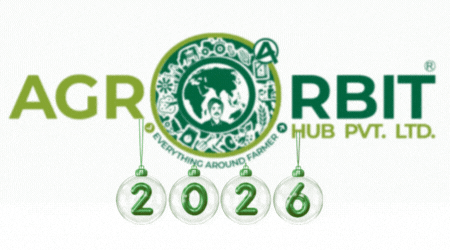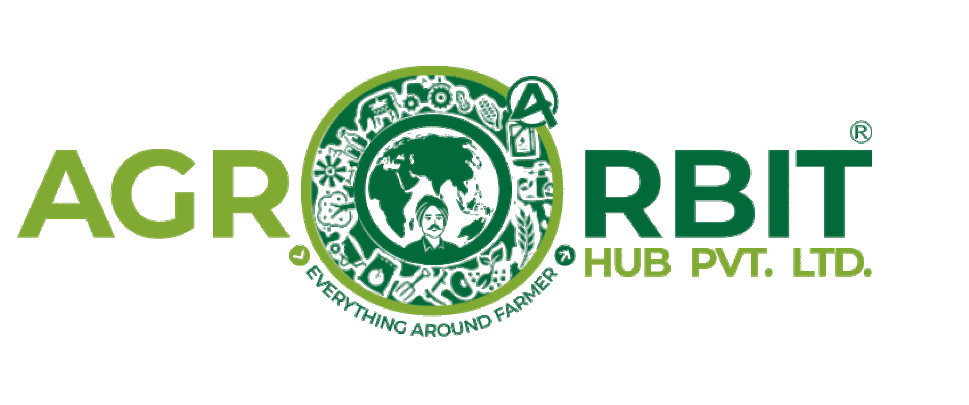

The Role of Plant Growth Regulators in Sustainable Agriculture
Description:
In today's rapidly advancing agricultural landscape, the integration of
technology and innovation is reshaping how we grow our food. Plant Growth
Regulators (PGRs) have emerged as a key tool in modern crop management,
offering targeted solutions to optimize growth, enhance yield, and improve crop
resilience. This blog explores the evolution of PGRs and their transformative
role in the era of precision agriculture. From understanding the science behind
PGRs to examining their application in data-driven farming techniques, we'll
delve into how these powerful agents are helping farmers achieve greater
efficiency, sustainability, and productivity. Join us as we uncover the future
potential of PGRs in driving the next wave of agricultural innovation.
A Plant
Growth Regulator (PGR) pesticide is a type of chemical substance used in
agriculture to modify the growth processes of plants. Unlike conventional
pesticides, which are designed to kill or repel pests, PGRs specifically target
plant physiology to enhance or inhibit various growth functions.
Key Characteristics of Plant
Growth Regulator Pesticides:
- Growth Modification: PGRs influence specific
aspects of plant growth, such as stem elongation, leaf expansion, root
development, fruit ripening, and flowering. They can either accelerate or
slow down these processes, depending on the desired outcome.
- Types of PGRs:
- Growth Promoters: Such as auxins,
gibberellins, and cytokinins, which stimulate processes like cell
division, cell elongation, and the breaking of dormancy.
- Growth Inhibitors: Such as abscisic acid and
ethylene, which can slow down growth, induce dormancy, or promote leaf
fall.
- Synthetic PGRs: Designed to mimic natural
plant hormones or interfere with their activity, these are often used to
control plant size, shape, or productivity.
- Applications in Agriculture:
- Enhancing Crop Quality: PGRs are used to improve
the size, color, shape, or shelf life of fruits and vegetables.
- Controlling Plant Height: In crops like cereals,
PGRs can help prevent lodging (when stems bend or break due to wind or
rain) by controlling stem elongation.
- Stimulating Root Growth: Used in crops and turf
management to enhance root development, improving drought resistance and
nutrient uptake.
- Ripening Control: Some PGRs help regulate
the timing of fruit ripening and drop, ensuring better harvest
management.
- Examples of PGR Pesticides:
- Ethephon: Used to promote ripening
in fruits like tomatoes and pineapples, or to help certain crops like
cotton shed leaves before harvest.
- Chlormequat chloride: Commonly used in cereals
to reduce stem length and prevent lodging.
- Paclobutrazol: Used to inhibit gibberellin synthesis, reducing plant height and promoting flowering in various crops.

Plant
Growth Regulators (PGRs) play a significant role in modern agriculture by modulating the
physiological processes of plants to achieve desired growth outcomes. Unlike
traditional fertilizers or pesticides, PGRs are designed to influence specific
aspects of plant growth, development, and productivity, making them an
essential tool in precision farming and sustainable agriculture. Here are some
key roles of PGRs in agriculture:
1. Enhancing Crop Quality and Yield
- Fruit and Flower Development: PGRs like auxins,
gibberellins, and cytokinins help regulate flowering, fruit set, and fruit
development, ensuring better quality and higher yields. They are used to
prevent premature fruit drop, increase fruit size, and improve uniform
ripening.
- Improving Grain Quality: In cereal crops, PGRs can
be used to improve grain filling, resulting in better grain quality and
higher market value.
2. Controlling Plant Growth and Architecture
- Reducing Lodging in Crops: PGRs such as chlormequat
chloride and paclobutrazol are used to shorten plant stems, reducing the
risk of lodging (when plants fall over due to wind or heavy rain). This is
especially useful in crops like wheat, rice, and barley.
- Managing Plant Height and
Shape: In
ornamentals, fruit trees, and turf, PGRs help control plant height, shape,
and branching, making them more manageable and aesthetically pleasing.
3. Improving Stress Tolerance
- Drought and Heat Resistance: PGRs like abscisic acid
help improve a plant's ability to tolerate drought and heat stress by
regulating water loss through stomatal closure and enhancing root growth
for better water uptake.
- Cold Tolerance: Some PGRs promote the
accumulation of solutes in plant cells, which can enhance a plant’s
resistance to cold or freezing temperatures.
4. Promoting Root Development
- Root Growth and Development: PGRs like auxins are used
to stimulate root formation and growth, which is particularly beneficial
in transplanting crops or establishing new plants. Better root systems
help plants absorb more nutrients and water, promoting overall plant
health and productivity.
5. Synchronizing Ripening and Harvest
- Controlling Ripening: PGRs like ethephon are
used to control the timing of fruit ripening, allowing for more
synchronized harvesting and reducing losses due to over-ripening or
spoilage. This is particularly important in fruits like tomatoes, apples,
and bananas.
- Leaf Shedding and
Defoliation: In
crops like cotton, PGRs help induce leaf drop before harvest, making
mechanical harvesting easier and more efficient.
6. Improving Post-Harvest Shelf Life
- Extending Shelf Life: PGRs such as gibberellins
are used to delay senescence (aging) in fruits and vegetables, extending
their shelf life and reducing post-harvest losses. They can slow down the
processes that cause wilting, yellowing, and softening in stored produce.
7. Supporting Sustainable Agricultural Practices
- Reducing Chemical Inputs: By promoting healthier and
more resilient plant growth, PGRs can help reduce the need for additional
chemical inputs, such as fertilizers and pesticides. This contributes to
more sustainable agricultural practices and reduces environmental impact.
- Optimizing Resource Use: PGRs enhance the
efficiency of water, nutrient, and light use, ensuring that plants can
make the most of available resources. This optimization supports higher
productivity with less environmental footprint.
8. Improving Crop Uniformity
- Uniform Growth and Maturity: PGRs help achieve uniform
plant growth and development, which is crucial for crops harvested
mechanically or sold fresh. Uniformity in size, shape, and maturity helps
reduce waste and increase marketability.
9. Boosting Plant Defense Mechanisms
- Disease and Pest Resistance: Certain PGRs can induce
systemic acquired resistance (SAR) in plants, enhancing their ability to
resist pathogens and pests. By stimulating the plant's natural defense
pathways, PGRs can reduce the incidence of diseases and minimize crop
losses.
10. Facilitating Regeneration in Tissue Culture and
Cloning
- Tissue Culture and
Propagation: In
plant tissue culture, PGRs play a critical role in inducing cell division,
differentiation, and regeneration of new plantlets from tissues,
facilitating the propagation of high-quality, disease-free plants.
Conclusion
PGRs are
versatile tools that help farmers manage crop growth more effectively and
sustainably, offering numerous benefits from seed germination to post-harvest
management. By harnessing the power of PGRs, modern agriculture can achieve
higher productivity, better quality crops, and improved resilience against
environmental challenges, all while minimizing the ecological footprint.







